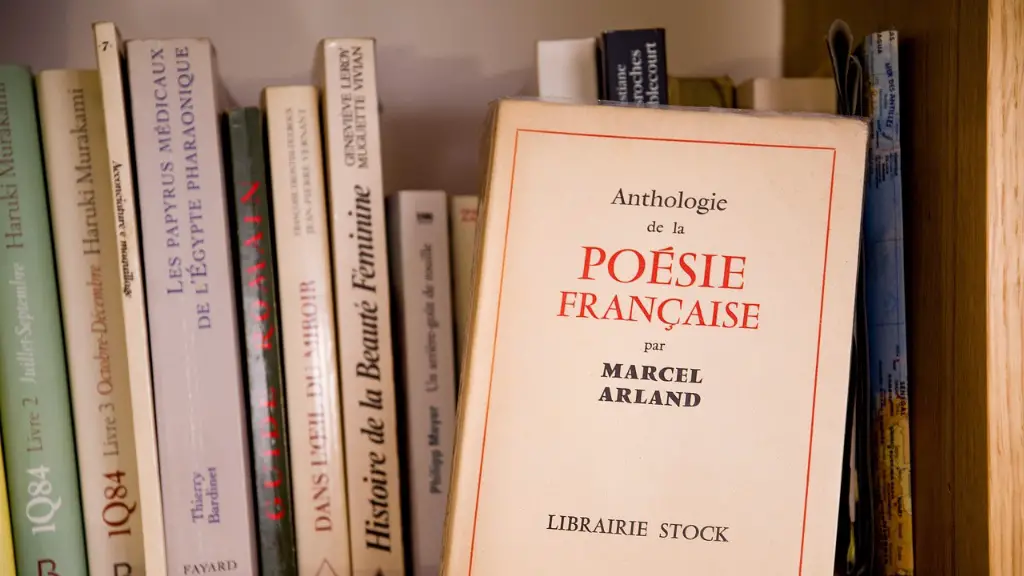Annotation Overview
Annotation is the act of reading and making notes on a text to develop a deeper understanding of it. When it comes to annotating poetry books, the goal is to learn more about the poet’s use of language, rhetorical strategies and metaphors in order to analyze the poem’s true meaning and understand the poet’s intent. In addition to understanding the text on a deeper level, annotation allows readers to pick up on other important information like important dates and names, as well as uncover potentially symbolic elements of the poem.
When it comes to annotating poetry, it is important to remember that there is no one-size-fits-all approach. Different readers analyzing the same poem may come to different conclusions about its meaning, and the ones that leave an annotation will likely be different from the ones that another reader may leave. That being said, there are some common tips and techniques that can help make the process easier.
Tips and Techniques for Annotating Poetry
When it comes to annotating poetry, there are a few tips and techniques that can help make the process simpler and more efficient. First, it is important to read the poem several times before beginning to annotate. This gives readers the chance to get a better understanding of the main theme, motifs, and imagery of the poem. This is important because it makes the notes that are left after the reading process much more useful and focused.
Next, when reading through the poem it is helpful to keep a dictionary on hand. This allows readers to look up unfamiliar words, as well as pick up on subtle hints of symbolism and meaning hidden within the poem. It is also important to note that it is okay to make mistakes while annotating, as long as readers take the time to understand the poem from a critical standpoint. As long as readers take the time to read the poem multiple times and relate it to their own life experience, they are likely to make meaningful notes that reflect the poem’s message.
Questions to Guide Annotation
When it comes to annotation, it helps to ask questions along the way. This can include anything from open-ended queries about the poem’s content and tone, to more specific questions about meter and poetic devices. Examples of questions might include:
• What is the poem about?
• What is the tone of the poem?
• What are the main points of the poem?
• What metaphors and symbols are used to convey meaning?
• How does the poem’s meter and structure contribute meaning?
• Is there any repetition of words or phrases?
Answering questions like these can help readers gain a deeper understanding of the poem and make it easier to write meaningful and focused annotations.
Example Annotations
In addition to discussing annotation tips and techniques, it can also help to look at examples of how others have annotated poetry. The goal of these example annotations is not to dictate the notes that readers take while annotating, but rather, to provide an idea of what annotations might look like, with various annotations offering clues as to the deeper meaning of the poem.
An example annotation might look something like this: “The poet uses repetition of the phrase ‘haunting calm’ to signify a sense of peace that is fragile, like a dream. The combination of ‘haunting’ and ‘calm’ is paradoxical, which establishes a mood of bittersweet nostalgia.”
This annotation is a perfect example of how a reader can write down their thoughts and observations about a poem. By noting the use of repetition and paradox, the reader is able to uncover a deeper understanding of the poem’s tone and meaning.
The Benefits of Annotating Poetry
Annotating poetry is a great way for readers to gain a better understanding of the poem’s tone, message, and meaning. Through leaving thoughtful notes about the poem’s content and structure, readers can come to a deeper understanding of the poem, as well as the poet’s intent. Additionally, the act of annotating can help readers further appreciate the poet’s use of language, as well as the complexity of the poem itself.
Annotation can also be a great way to connect with literature on a more creative level, as it gives readers the chance to engage with a text on a more personal level. Rather than just passively reading a text and leaving it once it’s finished, annotation gives readers the chance to interact with a text—actively reading and understanding it, while making notes that reflect their own thoughts and observations.
Resources for Annotation
In addition to the tips and techniques for annotation, readers may also want to make use of helpful resources available online that can make the process of annotating poetry much easier. For example, websites like PoetryFoundation.org offer thorough explanations of what annotations are, as well as examples of annotations that readers can use as reference points when annotating.
There are also helpful tools like Evernote, which allow readers to annotate their poetry offline. This type of tool gives readers the power to highlight sections of text, easily look up definitions of words and concepts, and store all of the important information related to a poem in one convenient location.
Integrating Annotations Into Writing
Another great way to make use of annotated poetry is to incorporate it into writing. This can be done in multiple ways, such as citing a poem’s impressive rhymes and meter, or discussing its symbolism and imagery. Integrating an annotated poem into writing can be a great way to showcase a reader’s analytical thinking and ability to interpret a poem.
Applying Annotations Across Disciplines
Annotating a poem can be a great way to come to a deeper understanding of it, but annotating a poem can also be beneficial in a larger context. Annotated poetry can be used to help students understand difficult topics in other disciplines, from history to science. Overarching themes in poems can help students to better understand complicated concepts in different subjects, as the act of annotating encourages readers to explore the meaning of a poem in a more detail-oriented manner.
Conclusion
Annotating a poem can be a great way to gain a deeper understanding of the poem and its meaning. By taking the time to read a poem multiple times, utilize resources, and ask questions, readers can make more informed annotations that reflect their own thoughts and observations. Additionally, annotating a poem can help readers to apply the same concept to texts in other disciplines, making annotation a useful and versatile tool.


